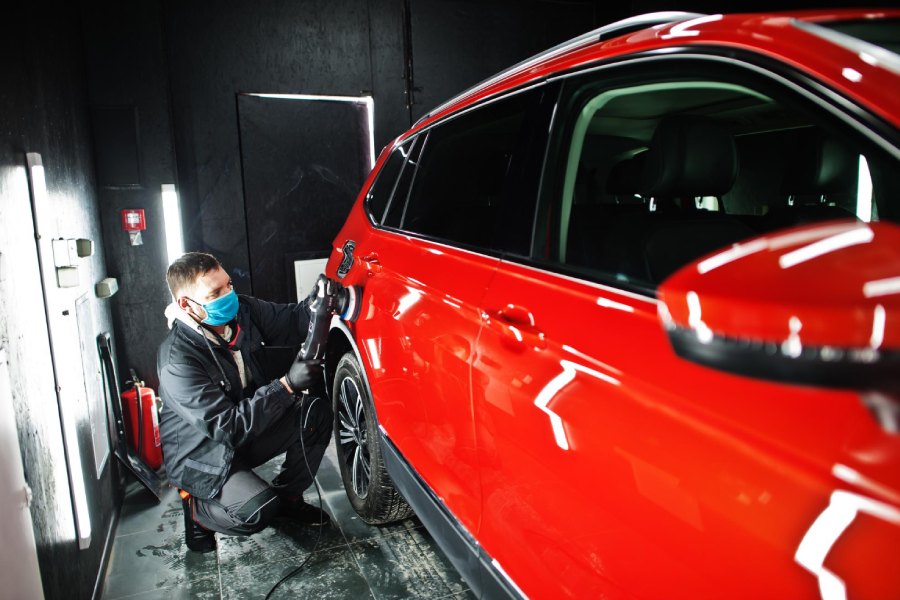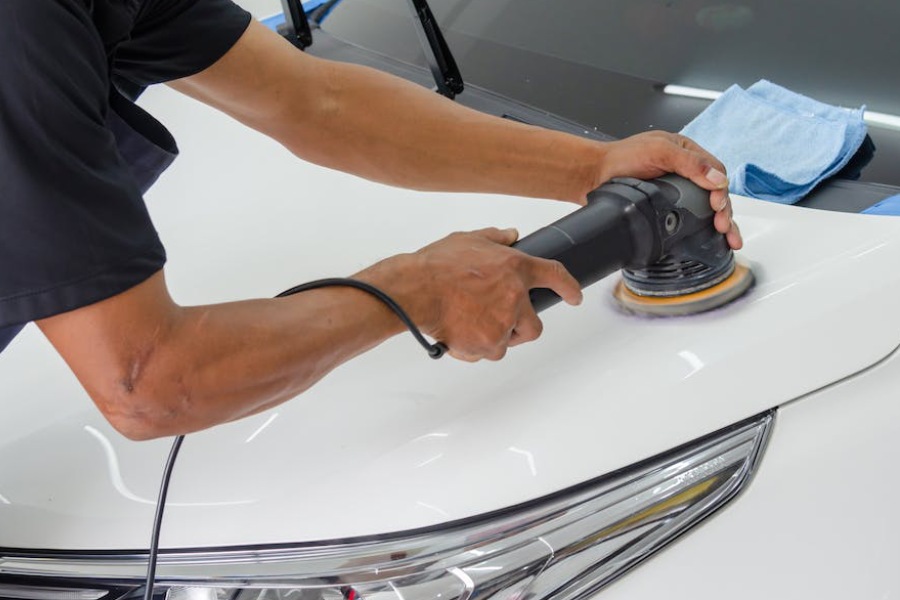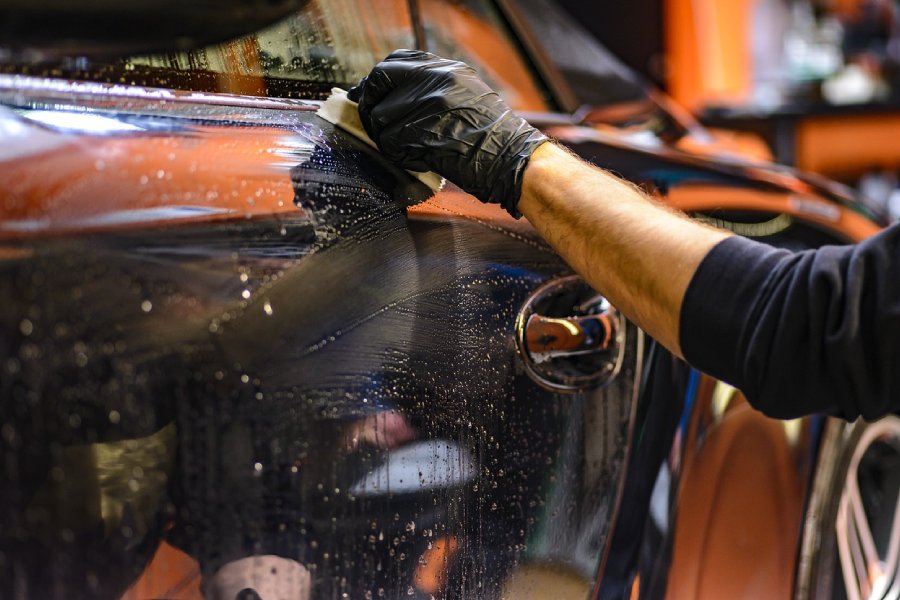Protecting car paint is a significantly critical aspect of preserving your car’s longevity and aesthetic appeal. By adopting comprehensive maintenance routines, car owners and enthusiasts can extend the life of their vehicle’s paint job as well as preserve their beauty and appeal. How to protect car paint?
While there are numerous methods of protecting your car’s paint, several stand out as the best practices. From the basic washing and waxing, protective coatings, such as ceramic, can be applied to act as a barrier, shielding your car paint from outside conditions and threats.
In this article, we elaborate on the best practices for protecting car paint and mention some of the most common threats to your vehicle’s exterior. Additionally, discover our step-by-step guide for protecting this paint coat and explore some protective measures you can utilize to maximize your car’s longevity.
How to Protect Car Paint
To protect your car’s paint, you can start by regularly washing and waxing it to keep the paint in good condition. It’s also a good idea to park in shaded areas to avoid prolonged exposure to the sun, which can fade the paint.
Additionally, consider using a car cover to protect the paint from dust, debris, and other environmental factors. If you notice any scratches or chips, it’s important to touch them up promptly to prevent rust from forming.
Ultimately, if you’d prefer professional help with your car paint, you can count on us. Our team of experts will make sure that your car’s paint is well-maintained and protected.

Best Practices for Protecting Car Paint
So, how to protect car paint from scratches or fading?
Simply put, maintaining your car paint is an essential step in preserving your car’s aesthetic appeal and overall longevity.
The importance of routine cleaning and waxing to create a protective barrier on the car’s exterior cannot be overlooked, as it provides numerous benefits for both the car’s functionality and practicality. Some of the most common advantages of regular maintenance include:
- Prevents rust and corrosion
- Keeps your car’s exterior in top-notch condition
- Extends the longevity and protective characteristic of your paint
- Reduces the amount of dirt and debris accumulating on your car
- Helps protect against scratches, UV rays, and other damage
- Improves performance
Furthermore, it’s important to understand the differences between wax, sealants, and ceramic coatings, considering factors such as ease of application, durability, and budget.
Although wax is one of the most common and budget-friendly safeguard layers, modern sealants offer more extensive durability and resistance against environmental conditions. However, ceramic coatings are a solution that offers a permanent protective barrier, surpassing the protective capabilities against threats of both wax and sealants.
Common Threats to Car Paint
Car paint faces several threats and challenges on a daily basis. While everyone knows that scratches, road debris, and other physical damage can damage the paint job, there are numerous other threats as well.
Ultimately, all of these threats can lead to damage to the exterior of your vehicle as well as paint oxidation, discoloration, corrosion, and erosion, shortening its lifespan and compromising its aesthetic appeal. Some of the most common threats to car paint are:
- UV rays – One of the most common enemies of car paint is the sun’s UV rays. While prolonged exposure to sunlight can lead to fading and oxidation, parking it under shades and using car covers can help protect your paint.
- Bird droppings – Although it’s nearly impossible to completely avoid bird droppings, there’s an easy solution for this problem. Gently remove them using a safe cleaner and a microfiber cloth, which will prevent any potential lasting damage.
- Tree sap – Tree sap is sticky and acidic, but parking your car away from trees or investing in a car cover will surely help.
Step-by-Step Guide on How to Protect Car Paint
Preserving and safeguarding your car paint requires a considerate and thought-through approach. The following guide aims to help car owners prepare the necessities with straightforward and practical steps to protect their paintwork.
Before starting the process of applying any coating or cleaning, ensure you have the following equipment and tools:
- Car wash kit – including a washing solution, microfiber wash mitts, and dry clay towels
- Clay bar – this serves to remove contaminants from the surface
- Polishing solutions – removing minor imperfections and enhancing the paint’s vibrancy
- Applicator pads – microfiber applicator pads for applying the coating product
- Coating product – make sure you choose a proper coating product
- Microfiber towels – for removing the excess coating and buffing
- Protection gear – including a mask and gloves for protective measures
Once you’ve gathered everything you need, here are the steps for protecting your car paint:

1. The preparation
Before starting any coating applications or protective coverage processes, ensure your vehicle is thoroughly cleaned. Although the preparation step is likely the most complex and time-consuming, it’s critical for achieving optimal end results.
Begin by rigorously washing your vehicle’s exterior with high-quality solutions using a microfiber wash mitt to avoid any scratches or damage to the surface. Pay special attention to removing any dirt, debris, and any other surface contaminants, as this will ultimately impact the final outcome.
Next, you’ll need to thoroughly rinse off the solution from your car and dry it using a clean, soft towel to avoid water sports. Once your vehicle is completely rinsed, remove any contaminants that are stuck on the paint using a clay bar, clay mitt, or clay towel. Use a clay lubricant and gently spread it across the paintwork. This will pick up embedded contaminants on the surface and achieve a perfect canvas for the coating. You can move on to the next section when the surface feels smooth.
Furthermore, polishing the car’s paintwork is crucial to enhance the final finish. This will also help increase the paint’s gloss and vibrancy, giving your vehicle a more stunning appearance.
2. Applying the coating
Once the preparation and polishing work is done, you can move on and apply the coating. While different coating products have varying application methods and specifications, it’s important to understand the unique instructions for the product you’re using. Some coatings may require you to apply the product in cross-hatch patterns, while others recommend straight lines.
Carefully read the manufacturer’s specifications and work miraculously to apply the coating evenly, making sure you avoid streaks or missed spots. Follow these steps:
- Shake the bottle well before opening and using it.
- Pour a few drops on the soft and clean microfiber or foam applicator pad.
- Spread the coating across the paint, working in small sections of the car. You can start on the hood, roof, or door to ensure you evenly spread the coating without it drying too soon.
3. Letting it cure
Once you apply the coating, park the vehicle indoors for a few hours, allowing it to dry for the recommended time specified in your coating product’s instructions. It’s important to avoid exposure to any chemicals or water for a few days. Drying times can vary depending on factors like temperature and humidity.
This step is critical to achieve the best possible outcome. Once it fully cures, the coating will provide stunning features like shine and luster, also protecting it against UV rays, color fading, and other environmental conditions.
Professional Services for Paint Protection
Although your car’s paint finish will look brand new and contaminants won’t accumulate like they used to, it will get dirty again. Bird droppings and tree saps will continue, and UV rays will always be a lasting enemy to your vehicle’s paintwork. However, proper maintenance of your coatings and regular checks will keep your car looking and performing at its best.
Washing and maintaining vehicles with our team at Epic Detailer helps car owners and enthusiasts alike preserve the glory and beauty of every vehicle. From professional detailing and paint protection films to ceramic coating services, we have the solution for every problem. So, if you’re facing car issues, seeking some car maintenance tips, or are looking for practical solutions, our team is dedicated to resolving every challenge and offering professional options for paint protection for every car.

Conclusion
A well-maintained car paint will not only enhance the visual and aesthetic appeal of your car, but also contribute to its longevity, performance, and resale value.
Regular washing, waxing, adding coatings, and addressing any damage promptly to defend your paintwork against physical hazards. By incorporating our practices and following our guide, you can ensure your car exterior remains well-protected, vibrant, and stunning.
We hope this article has provided you with the needed insight on how to protect car paint and how important car maintenance is.

